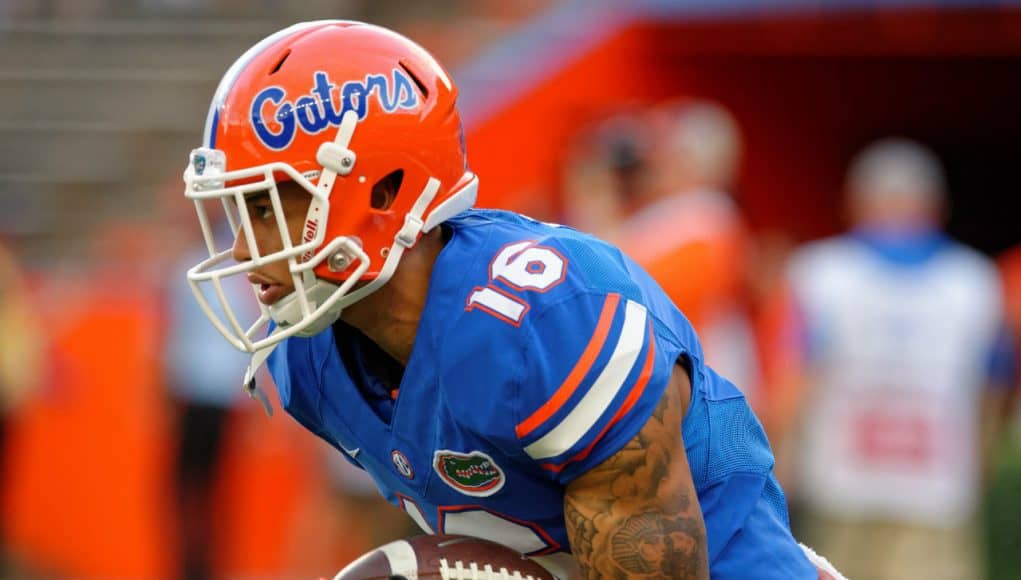Dan Mullen promised a renewal of special teams upon his return to Florida. In some ways, it has paid off. Putting more starters on special teams shored up some of the deficiencies, and, for instance, revealed Tyrie Cleveland to be a superlative gunner on punts.
One place it hasn’t really shown up is in the return game. In large part, Mullen’s Gators have taken a pass on returns.
In 2018, the punt return situation was still fairly normal. Freddie Swain returned 22 punts, and he took one of them back for a touchdown. The team as a whole had 27, and that’s in line with most of the last decade of Florida football. It’s down from the days of Brandon James, and it’s up from 2012 when opponents wouldn’t punt to Andre Debose, but it’s within the standard window.
Last year, however, Swain only attempted 14 punt returns. Kadarius Toney also got one shot at a return, so that makes 15 total. Since 2009 only the 2017 team had fewer punt return attempts at 13, but it did so in only 11 games. From a punt returns per game standpoint, the ’19 team was at the bottom.
Kickoff returns are a little more complicated. Some opponents can just put the ball through the end zone if their kicker has the leg to do it. Comparing back in time has to account for rule changes, such as the ball going out to the 25-yard-line on touchbacks in 2012 and the fair catch rule in 2018.
In ’09, Florida returned 40 kickoffs. In 2010 it tried 53 kickoff returns, and in 2011 it tried 47. Since then, only the 2014 team (41) has been above the 40 threshold. The 2012 rule change resulted in more touchbacks everywhere, Gainesville included.
UF’s kickoff returns dipped below 30 in the two years preceding Mullen’s return, but they fell off a cliff once he got there. In 2018, Florida only returned 11 kickoffs. In 2019, the number fell to eight. For the whole year. In 13 games.
Again, opponent strategy makes a difference. In the opener, Miami put two kickoffs short of the end zone, and UF did return both rather than fair catch them. Afterwards, the Hurricanes put every kickoff into or out of the end zone. Kentucky also put every kickoff into or through the end zone, and the Gators registered no returns in that game.
The fair catch rule does appear to have made kickoff returns fall some more, at least in the SEC. From 2012 when the extended touchback rule went into effect, the SEC leader in total kickoff returns attempted was always at least 40. Most years had four league teams in the 40s. In both 2018 and 2019, no SEC teams had more than 38.
That said, few kickers are able to reliably put the ball through the end zone. Eddy Piñeiro could, and his two years (2016: 15, and 2016: nine) are easily the lowest for Florida’s kickoff return defense. But Florida’s opponents were back up to 34 kickoff returns attempted in 2018 and 25 in 2019. Even as the Gators were not returning many kickoffs, their opponents were doing so at a more normal level.
I think it comes down to a willingness to take kickoffs out of the end zone. A clear example of that is Alabama from a year ago.
The 2019 Crimson Tide were second in the SEC with 30 kickoff attempts. However, more than half of them came in three games: Texas A&M, LSU, and Auburn. The Aggies hung around a while, and the two sets of Tigers gave Bama its only two losses. When the games were tight, Nick Saban authorized kickoff returns. While breezing to lopsided wins, he played it safe and trusted his offense to take care of things.
Mullen wasn’t always as down on kickoff returns as he has been the last two years. His Mississippi State teams bounced around the conference ordering, sometimes being near the top and sometimes being near the bottom in total kickoff returns. He had more when his defenses were less good, which should make obvious sense, but Florida has been dead last the past two years. Nothing like that happened in Starkville.
I can’t say for sure why Mullen has been so down on his return units. Some of it could be simple risk aversion, since the return game is disproportionately likely to produce game-changing turnovers. Under tremendous pressure to win right away as all Florida head coaches are, he may have decided that he’d take his chances with his offenses rather than try much with high risk/high reward returns. Or, at least on kickoffs, he may have not wanted to risk putting his offenses in field position holes if taking the ball out of the end zone failed to get to the 25-yard-line.
It may also be that he doesn’t have a returner he likes that much yet. Swain had a good average and the touchdown as a punt returner in 2018, but he was only at four yards per return last year. Toney has speed and moves but hasn’t been decisive in his few return attempts so far. Mullen signed some candidates for dynamic returner in Fenley Graham, Jaquavion Fraziars, and Tre’Vez Johnson, but they’re all true freshmen with no UF practices under their belts yet.
Florida could’ve used a game-changing play in the return game last year against LSU and Georgia, but none came. Will any come this year? It’s one of the few spots on the team that screams out for emphasis and improvement.


